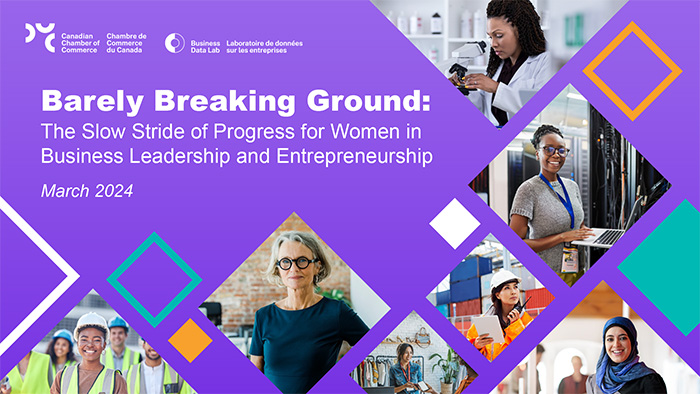Publications /
Barely Breaking Ground: The Slow Stride of Progress for Women in Business Leadership and Entrepreneurship
Barely Breaking Ground: The Slow Stride of Progress for Women in Business Leadership and Entrepreneurship
This report analyzes the significant representation and compensation gaps between men and women in management occupations and the unique challenges women entrepreneurs face.



Business Data Lab
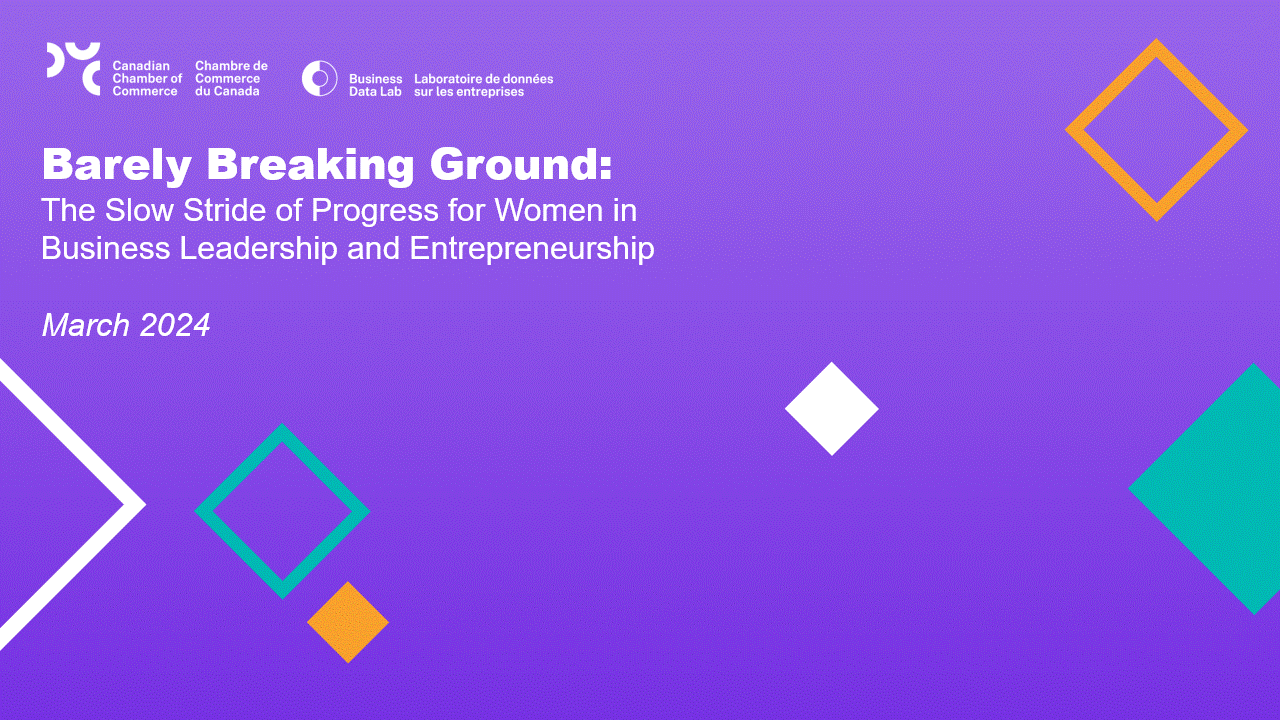
Over the past three decades, Canada has made some positive strides in advancing equality for women in business, but there’s still significant work to be done if we are to achieve the success seen in other countries — and if we are to see women reach equality in this century.
Barely Breaking Ground, a new report from the Business Data Lab, analyzes the significant representation and compensation gaps between men and women in management occupations and the unique challenges women entrepreneurs face.


Where Are We Now?
Canada has yet to bridge persistent representation and compensation gaps for women in management and board positions in corporate Canada.
Representation
When it comes to the share of women managers, Canada is behind nearly half of all OECD countries.

If recent trends continue at their present pace, women in Canada won’t reach equal representation until 2129!

Compensation
Despite women’s real wages having grown almost twice as fast as men’s between 1997 and 2023, women in management positions still earn less than men. In 2023, women made 88 cents to the dollar relative to men in the same occupations — up from 80 cents in 1997, but still severely lagging.
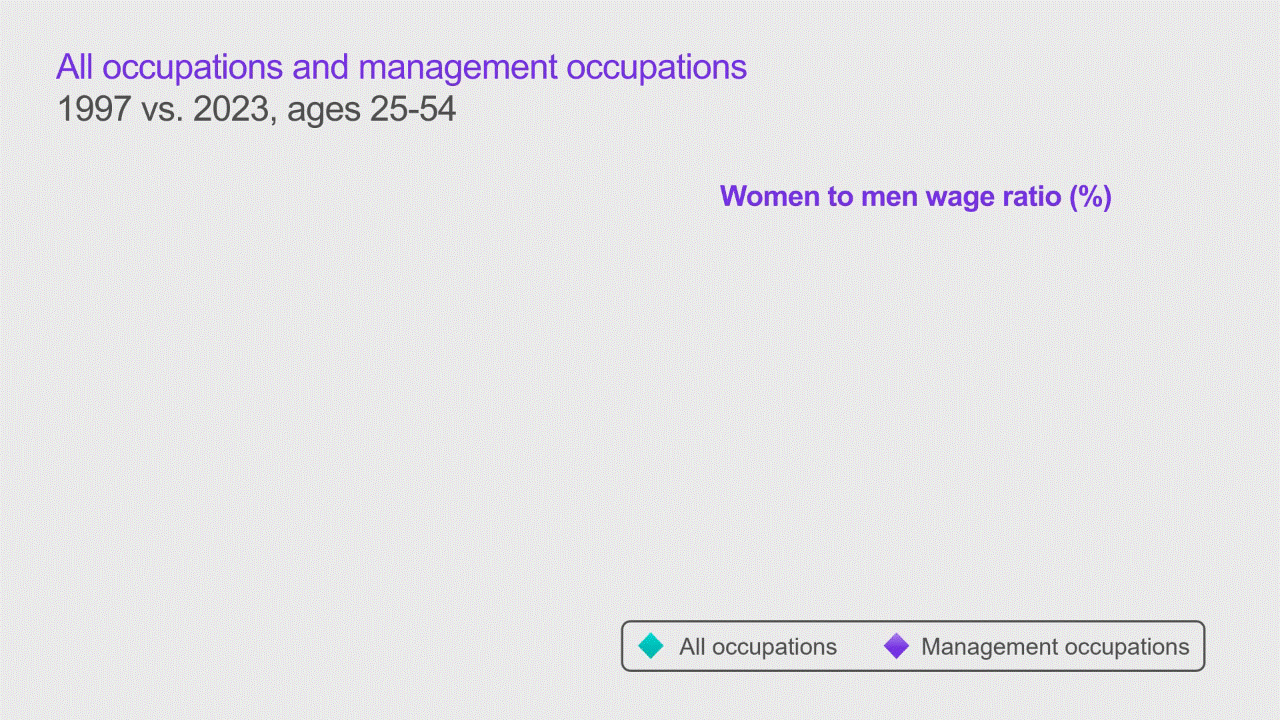
There are some bright spots: women have achieved representation parity in six of the 19 management occupations analyzed, and in Quebec, Saskatchewan and the Atlantic provinces, women are on track to achieve equality before the end of the century.

Representation and Compensation by Management Occupation
Barely Breaking Ground distinguishes between middle- and senior-management positions.
Middle Management
Of the three middle management categories considered, the biggest representation gains for women were in “specialized” middle management (which includes healthcare, education and public administration) up from 34% in 1987 to 48% in 2023.
Unfortunately, progress across the other middle management occupations has been glacial, with growth of only 3 percentage points or less over the period.
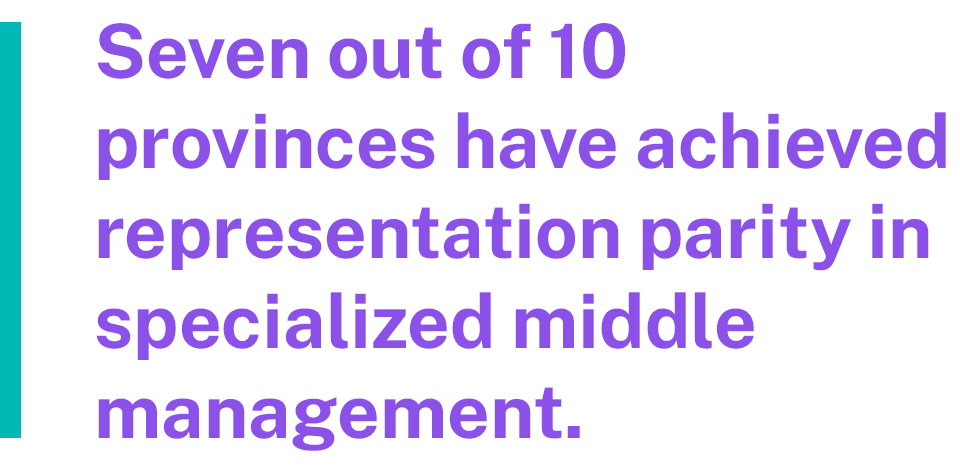
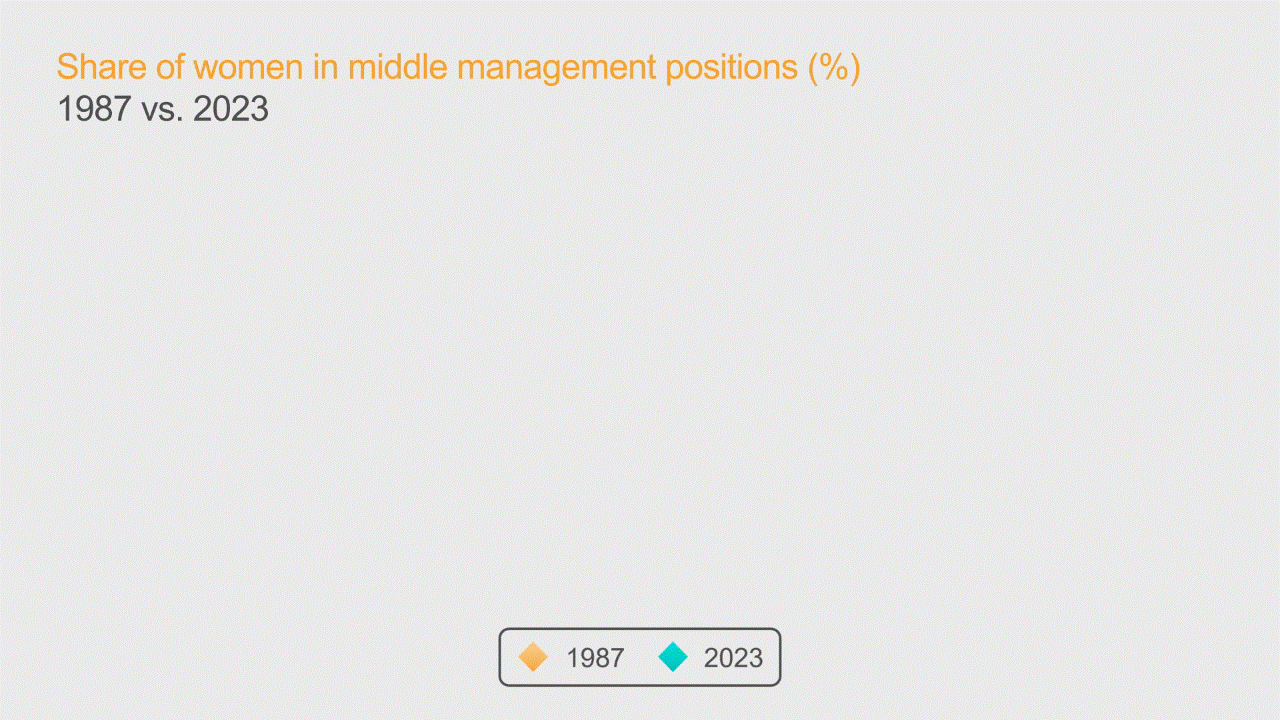
Additionally, the few areas with representation gains in middle management haven’t enjoyed significant compensation gains over the last three decades. While there have been incremental increases in pay since 1997, women still earn 11-22 cents less on the dollar than men.

Senior Management
Women in senior management jobs have had modest progress in representation and compensation over recent decades but are still underrepresented and underpaid compared with men in the same roles.

Boards
The share of women directors only increased by 3 percentage points between 2016 and 2020, resulting in a dismal showing of 21% of all positions. No province or territory has reached parity, although there’s considerable variation across jurisdictions.
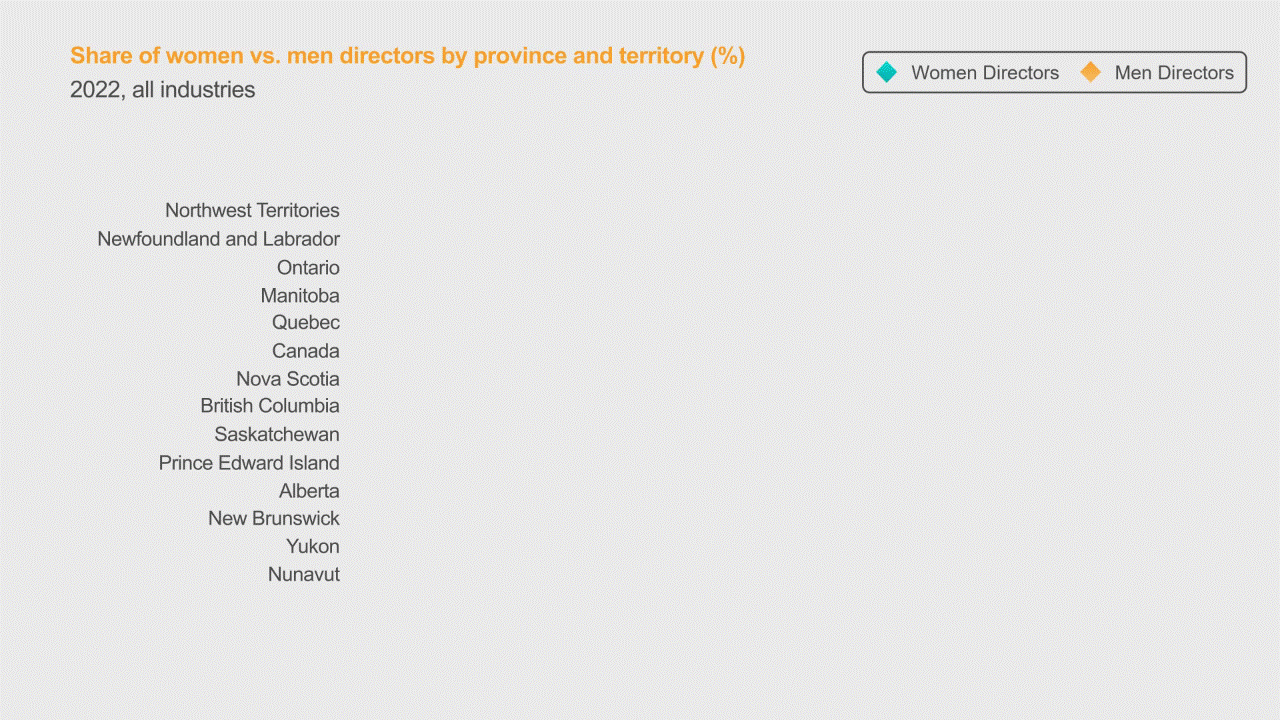
This slow progress on representation and compensation in management positions creates a weak pipeline of women leaders in Canada’s boardrooms.

Women Who Are Self-Employed and Entrepreneurs
The barriers women face in traditional workplaces, such as inflexible work conditions, the assumption of being “always available” and lack of promotion are likely motivating many to turn to entrepreneurship and self-employment.
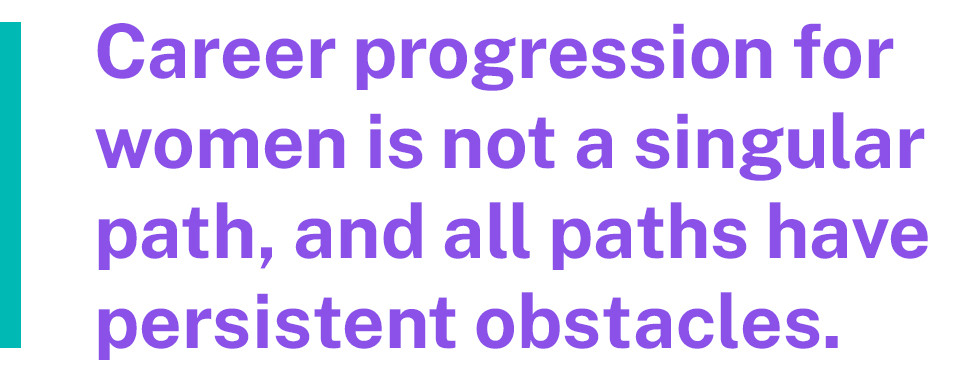
Having more women starting businesses may seem like a silver lining, but women entrepreneurship is concentrated in the same gendered industries where they face additional challenges, such as reduced access to capital, less information, as well as unfavourable business environments.
The industries where women-owned businesses are more highly concentrated are the same industries where women fare better in representation: specialized management and retail and wholesale trade. However, these are also the industries where pay gaps between women and men are the largest.
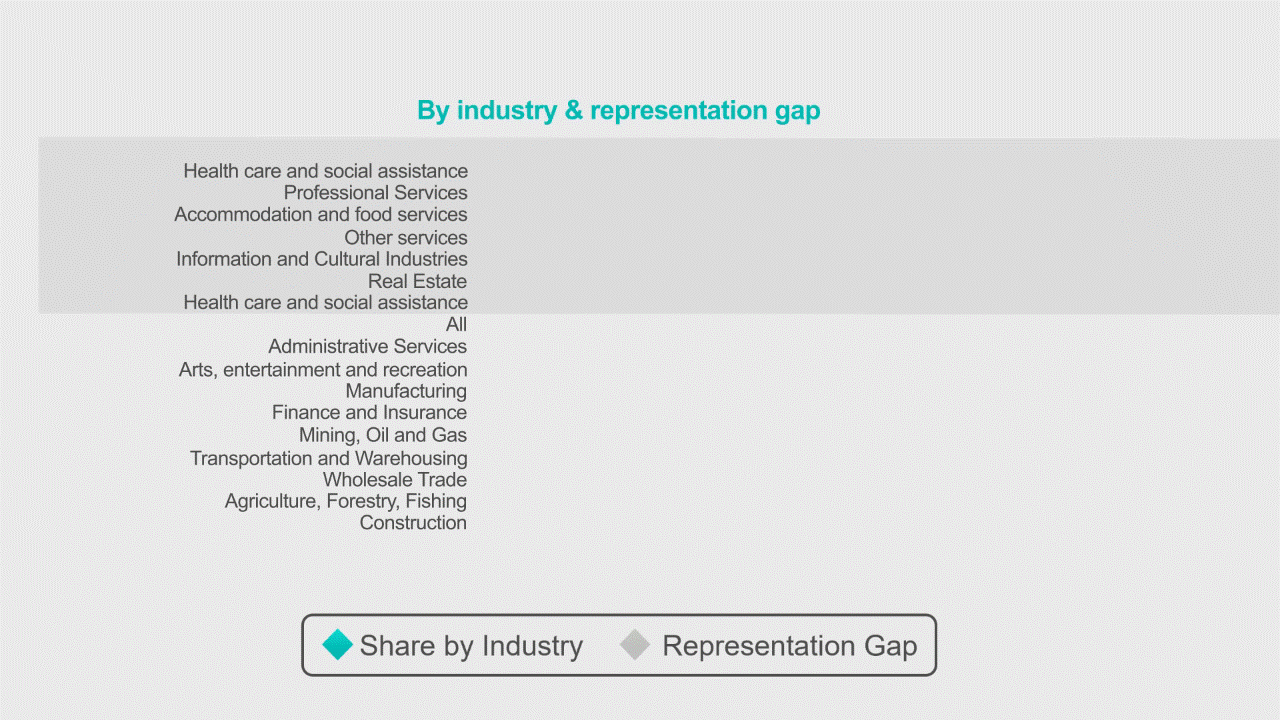

What Can We Do?
Canadian businesses, non-profits, governments and public sector employers all have a role to play in bridging the representation and compensation gap still experienced by women today.
Recommendations for Canadian Business and Non-Profits

Recruit
- Examine job descriptions to ensure they don’t inadvertently discourage women from applying.
- Expand candidate pools through internal mobility, alternative recruiting channels and remote roles to reduce geographic limitations.
- Track hiring outcomes to ensure diversity, equity and inclusion within the hiring process.

Retain
- Strive for equal pay in the workplace by re-examining job classifications annually.
- Provide upskilling and mentorship resources to support professional development for women seeking promotions.
- Unlock the potential of flexible and hybrid work to support workforce mental health and workers with young children.
- Track retention outcomes to identify and resolve challenges.

Promote
- Recognize and reward women leaders for their achievements.
- Track outcomes to ensure diversity, equity and inclusion within the promotion process.
- Hold senior leaders accountable for advancing diversity goals by tying metrics.
Recommendations for Governments and Public Sector Employers

Lead by Example
- Lead by example on flexible and hybrid work to model parent-friendly workplaces for the Canadian private sector.
- Hold senior leaders accountable for advancing diversity goals by tying metrics to their performance reviews and incentives.

Address Gaps
- Address parental leave gaps for women entrepreneurs.
- Consider altering the Business Development Bank of Canada’s (BDC) lending practices to better reach women and other intersectional entrepreneurs in the community.
- Improve awareness of supportive funding and services available through BDC and the Women Entrepreneurship Strategy.

Moving Forward
The gains made in the past thirty years should encourage and motivate us to accelerate our progress. Redoubling our efforts now will ensure that future generations won’t face the same challenges experienced by today’s women in business.

Additional Reading
- McKinsey & Company – Women in the Workplace 2023
- McKinsey & Company – Gender diversity at work in Canada
- McKinsey & Company – The present and future of women at work in Canada
- The Zero Report: The Prosperity Project’s 2023 Annual Report Card on Gender Diversity and Leadership
- Gender diversity in the Canadian boardroom: Where are the women leaders?
- Women in Business Leadership Boost ESG Performance: Existing Body of Evidence Makes Compelling Case
- Self-employment among women in Canada
- Women Entrepreneurship Knowledge Hub: The state of women’s entrepreneurship in Canada 2023
- Equileap – Gender Equality Global Report & Ranking 2023
Other publications

May 02, 2022
10 Takeaways from BDL Consultations

May 18, 2022
The Last Mile of Democratizing Economic Data

Dec 20, 2022
